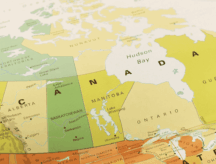Ontario, British Columbia, Saskatchewan and Manitoba hold PNP draws, this week
This week four provinces held Provincial Nominee Program (PNP) draws.
The PNP (as of the last immigration levels plan) is the main pathway for economic immigrants to enter Canada. The program exists to help spread the benefits of immigration across Canada, and to aid provinces in addressing specific labour and demographic challenges that they face.
Discover if You Are Eligible for Canadian Immigration
The PNP also has Express Entry aligned streams, known as an enhanced PNP nominations. These streams accept candidates in the federal Express Entry pool. Candidates can apply to a specific province’s enhanced PNP streams and (based on their eligibility) receive a provincial nomination or Notification of Interest (NOI). From here candidates will receive an additional 600 Comprehensive Ranking System (CRS) points, almost certainly guaranteeing them an Initiation to Apply (ITA) to the specific enhanced PNP stream.
Recently, the fifth and sixth Express Entry draws of 2023 were exclusive to candidates in enhanced PNP streams, issuing a total 1,366 ITAs.
Provincial Nomination Results—March 17-24
Ontario
On March 23rd, the Ontario PNP (OINP) held a draw for their Skilled Trades stream, issuing 746 NOIs to candidates with CRS scores ranging from 250-489. Candidates who received an NOI had created profiles in the Express Entry pool anywhere between March 23rd, 2022, to March 23rd, 2023.
Draws under the economic streams of the OINP are targeted for specific professions, which have been specified within the OINP program updates.
British Columbia
The British Columbia PNP (BCPNP) held a draw on March 21st, issuing a at least 254 NOIs to candidates across 6 streams.
Within the Skilled Worker International Graduate stream, the BCPNP held three targeted draws for early childhood educators and assistants, candidates in healthcare professions, and candidates in other jobs that are deemed priority occupations.
Manitoba
The Manitoba PNP (MPNP) held a draw on March 23rd, issuing a total of 566 NOIs (known under the Manitoba PNP as Letters of Advice to Apply).
The breakdown of NOIs issued by stream are as follows:
- Occupation specific selection—266 NOIs, targeting candidates in specific, in-demand professions, with a minimum CRS score of 612;
- All occupations—200 NOIs, with consideration to profiles not selected in the specific profession draw, with a minimum CRS score of 672;
- International Education Stream—52 NOIs; and
- Skilled Worker Overseas stream—48 NOIs to candidates who were invited by the MPNP under a Strategic Recruitment Initiative, with a minimum CRS of 708.
Saskatchewan
On March 23rd the Saskatchewan PNP (SINP) held two draws, inviting candidates from both the Express Entry, and Occupations in-demand streams.
184 Express Entry candidates with a minimum score of 82 were issued NOIs. Comparatively, the Occupations in-demand stream issued 312 NOIs to candidates, also with a cut-off score of 82. To be eligible for the Occupations in demand stream, a candidates profession must NOT be included on the SINP excluded occupation list.
A note on PNPs in the future
As mentioned previously, the PNP today represents that primary pathway for economic immigrants to Canada—anticipated to play a larger role in Canadian immigration in coming years.
In addition to the added consideration to the PNP, a recent meeting between the Forum of Ministers Responsible for Immigration (FMRI) further emphasized the importance of these provincial programs. Following the meeting, it was announced that provincial immigration would now receive its own multi-year levels plan, allowing provinces to understand their immigration allocation years in advance, and being able to plan accordingly.
In addition, following the meeting many provinces saw an increase in future immigration allocations:
- Alberta saw a significant increase in allocations, to 9,750 spots this year;
- Manitoba’s allocation for 2023 increased to 9,500 spots;
- Ontario noted an increase in allocations to 18,000 spots by 2025; and
- Saskatchewan will see an increase in allocations to 8,500 in 2025.
- Do you need Canadian immigration assistance? Contact the Contact Cohen Immigration Law firm by completing our form
- Send us your feedback or your non-legal assistance questions by emailing us at media@canadavisa.com






